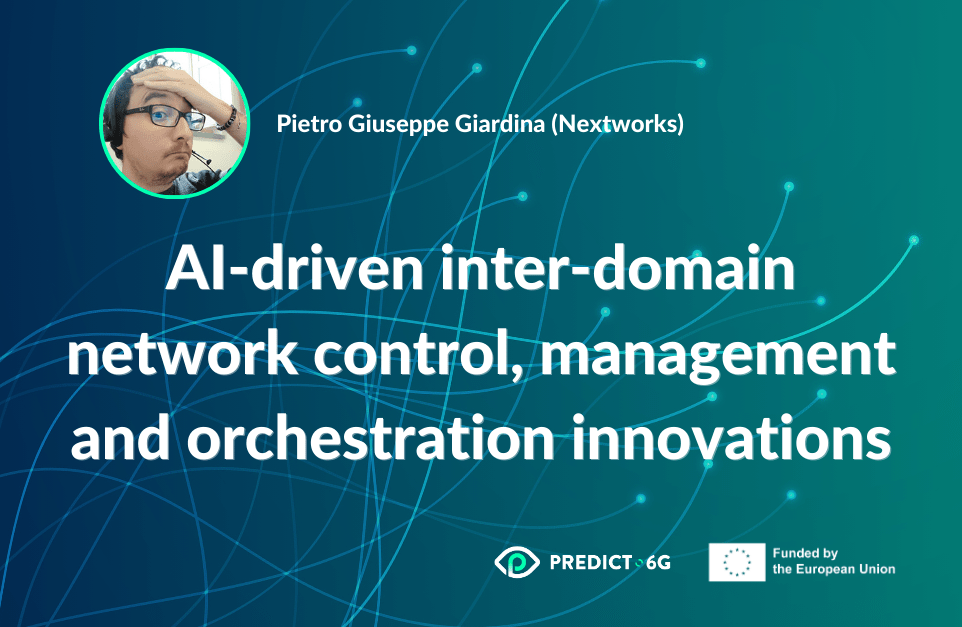By Pietro Giuseppe Giardina, Nextworks
Network technologies are in continuous evolution. The technological advancements led to more powerful networks characterised by high transport capabilities (large throughputs, reduced latency, etc.). Furthermore, the progressive softwarisation of the network, thanks to new paradigms such as Software Defined Networking (SDN) and Network Software Virtualisation (NFV) opened the door to a completely new set of network stakeholders beyond the role of the classical Telco Operator: vertical industries but also specialised software houses, resource providers (e.g., storage, transport, spectrum) service providers, etc.
All those stakeholders want to exploit the resources and the capabilities of the new networks, driven by different interests. A telco operator may be interested in integrating new technologies to increment the capabilities of its own network while reducing the integration cost and the network devices’ configuration overhead. On the contrary, a vertical service provider may be more interested in consuming network capabilities to deploy vertical services, without dealing with the complexity of the network itself.
With the advent of 5G, telco operators started studying the adoption of specific technologies i.e., Network Service Orchestrators and SDN Controllers, capable to abstract the network complexity and offer simple and effective interfaces for service orchestration and network management and control, allowing verticals to create their own services across a well-defined dedicated set network resources (e.g., network slices). Nevertheless, with the growing of the network capabilities, the services are becoming more complex accordingly and more demanding in terms of network resources, reliability, and pervasiveness. AR/XR, high-quality video stream services, autonomous driving, etc. are examples of services designed for the last generation of networks.
However, to be truly pervasive, such services cannot be limited to a single network domain (e.g., one Telco Operator), but require to be deployed across multiple network domains, potentially belonging to different network operators, and characterised by different network technologies.
The lifecycle management and control of services across multiple networks in a transparent manner for the requestor is a challenge for the management plane. The provisioning of a similar service requires a management plane platform capable of coordinating with the different network domains, creating local subservices and stitching them all together for building a unique E2E service. Its architecture should be modular, flexible, and easily extendable to new network domains and technology, while preserving the right level of abstraction.
Research projects and SDOs have widely investigated the problem. In particular, ETSI ZSM ISG (Zero-touch network and Service Management Industrial Specification Group) released a set of standards (GS, Group Specification) which widely discussed the problem of multiple domain networks and service management [1].
The preservation of the requested quality of service (QoS) at runtime is a challenge for the control plane. Again, Research and SDOs have given their contribution over the years, developing the concept of network and service automation (zero-touch) based on control loops (CL). Network and service automation is where AI can play a crucial role. One of the main objectives of the 6G is indeed the integration of AI technologies in network control and management systems by design, for a number of tasks so far accomplished mostly by human operators. The objective is to guarantee a timely reaction to the changes that characterise the network dynamicity and reduce the errors (and the human intervention in general) at the same time. ETSI ENI and ETSI ZSM [2] [3] propose solutions for network and service automations supporting AI. Hexa-x and Hexa-x-II are the most recent examples of EU-funded research projects incorporating AI-based CLs in 6G architecture.
Similarly, Digital Twinning technologies allow to emulate/simulate the behaviour of the target network (or specific segments) in order to predict its future states when applying a given configuration. ETSI is producing a report in this regard, ZSM-015 [4].
PREDICT-6G tackles the multi-domain service orchestration and automated network and service control in the challenging domain of time-critical services.
When the focus moves towards the orchestration of time-critical services, e.g., the remote control of industrial processes, the challenge for management and control become even more complex. Time-sensitive services require reliable network infrastructure capable of delivering information in a deterministic manner (delivery within a specific timeframe, fixed order of arrival of the messages, etc.). Several deterministic network technologies are nowadays available (IEEE TSN, IETF DetNet, IETF RAW), with different levels of maturity and very limited interoperability.
To deal with this heterogeneity, PREDICT-6G applies both SBA (Service-Based Architecture) and ZSM architectural concepts for the orchestration of E2E deterministic services, across multiple technologies whose level of support to the determinism may significantly vary and could be even zero.
AI/ML and Digital twinning technologies are employed at both Management and Control level for optimal deterministic path computation and resource allocation, KPI prediction and QoS preserving at runtime. Both of them are supported by a pervasive monitoring facility providing the data in near real-time.
References:
[1] ETSI GS ZSM 002 V1.1.1 (2019-08). Zero-touch network and Service Management (ZSM); Reference Architecture
[2] ETSI GS ENI 005 V2.1.1 (2021-12). Experiential Networked Intelligence (ENI); System Architecture
[3] ETSI GS ZSM 009-1 V1.1.1 (2021-06). Zero-touch network and Service Management (ZSM); Closed-Loop Automation; Part 1: Enablers
[4] ETSI GR ZSM 015 Zero-touch network and Service Management (ZSM); Network Digital Twin Stable draft available here: https://portal.etsi.org/webapp/workProgram/Report_Schedule.asp?WKI_ID=64372

